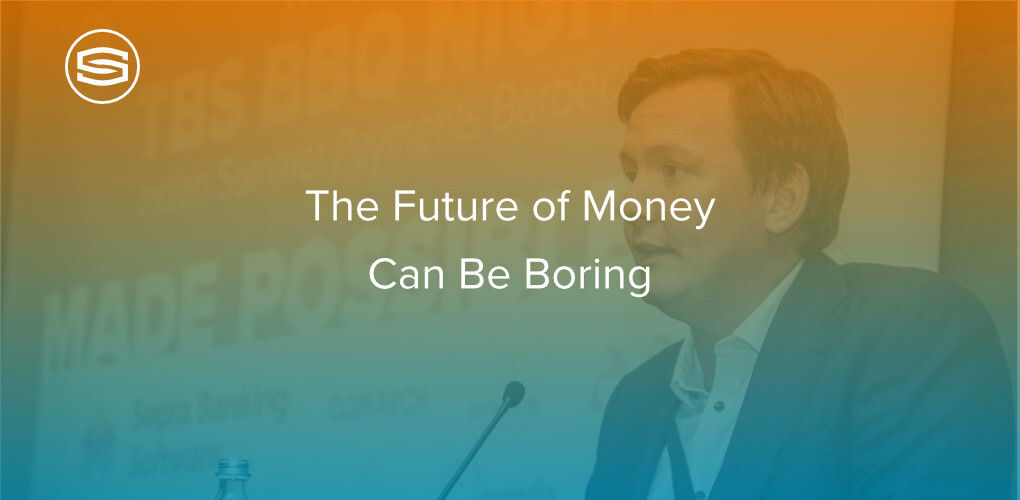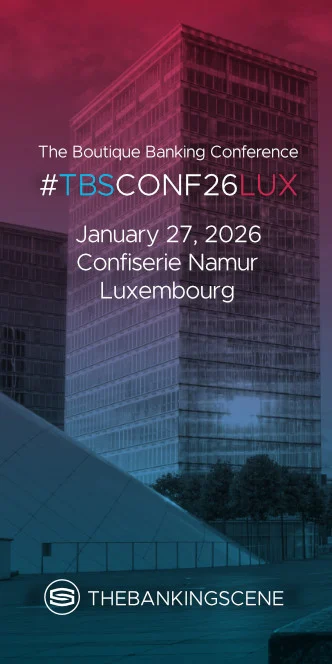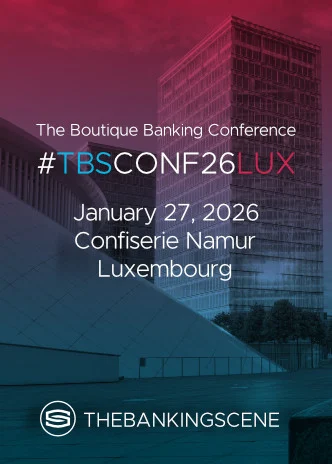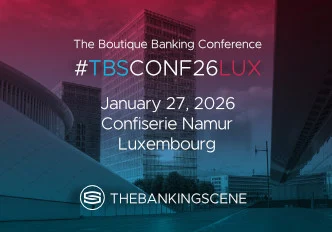
Insights & Opinions
The Future of Money Can Be Boring
Mon, 25 Sep 2023


If money makes the world go round, knowing what its future looks like would make you the wealthiest person on earth. What’s a blessing for event organisers like me is a serious frustration for futurists looking to get rich quickly: the future of money is a never-ending discussion.
The reason is simple: the future of money evolves and adapts with society, its values, and the way it is organised and structured. So, exactly what that future of money will look like, we don’t know.
This blog explores my key takeaways on the future of money and how CBDC fits in that future, based on the first panel of The Banking Scene Payments BBQ Night 2023.
Last week, Andrew shared that he was sceptical about CBDC and asked to change his mind. I am not sure I can, but I’ll give it a try.
On the quest for finding the building blocks for a successful future-proof construct of money, our experts listed many possible shapes of money for the future, as Andrew said, going from Galactic Credits, beaver pelts, water, energy and even time. David Birch, the moderator, even referred to a Robert Heinlein scenario where a giant computer with some kind of blockchain runs all the money in the world with 100% transparency.
What makes one scenario more reasonable than another? How can we narrow down the options? Luckily, we had a couple of bright and more serious experts in the room to answer that question:
- Tim Hermans, Director, National Bank of Belgium
- Jannah Patchay, Executive Director, Digital Pound Foundation
- Tom Lambrecht, CEO Benelux and Nordics, Sopra Banking Software
Among the panellists, there was a clear consensus that money today deserves a review. It needs a definition that is fit for the digital age, which is why we see so many initiatives today, both public and private, that strive to redefine money as we know it.
We have a history where at one point, humanity paid with seashells, as Tom Lambrecht explained. After that came coins and later a fundamental shift with paper money, where suddenly the intrinsic value of money saw a disconnect with the nominal value of money.
Increasingly more, money was built on consensus and trust.
At the very start of the discussion, Tim Hermans set the boundaries of the scenarios by rightfully noting that the concept of money is a different discussion to talking about the form factor. “The form factor can be anything”, he said. “As long as it’s feasible, money can take any form we develop or invent. However, as such, money hasn’t changed during history”.
Money has 3 functions, he explained: it is a unit of account, it is a measure of exchange, and it is a store of value. That’s it, that is the past, present and future of money. Can water or electricity be money in the future? Or technology, perhaps? It can, as long as it fulfils those three functions.
This reconfirms that money is built on consensus and trust.
Today, the world has become digital, and it transformed our interaction with money. As we moved away from cash to digital transactions, consumers interacted increasingly more with commercial rather than public money.
To come back to Andrew’s blog: that is also why there are CBDC developments across the globe. If money makes the world go round, knowing what its future looks like would make you the wealthiest person on earth, if we let the free market play.
The question of whether or not we need a CBDC as an alternative has the same answer as whether we are willing to let the free market play to reinvent money.
So, are we willing to hand over consensus and trust to a private party of something that is a unit of account, a measure of exchange and a store of value?
Don’t we need some kind of supervisory body to oversee all this? And isn’t that supervisory body expected to take their responsibility without a commercial or a political agenda?
Today people pay with money that they have on their bank account and no longer pay with the cash issued by central banks. As long as people trust their bank with their money, there isn’t much of a problem. But what happens when it goes wrong?
Even with the best regulations and rules covering all possible scenarios we can imagine, we cannot prevent that one scenario no one thought about. That is why the panellists believed that you cannot have commercial money without having public money in the loop. Because, after all: money is a claim on something.
Jannah: “When you deposit 100 euros into a bank account, you no longer own 100 euros: you have a claim against a commercial bank, which is backed by perhaps, say 10 euros and a whole lot of prudential regulation and some supervision and oversight and a lot of trust and confidence in the whole system. But importantly, you also know that you can go to an ATM, and you can put your card in, and you can withdraw out 100 euros in cash. And that is now converting that fluffy claim against the commercial bank into, again, a solid claim against the central bank, in which you have complete confidence and trust. And I think that's the role of public money in ensuring confidence and trust in the financial system.”
So, in essence, CBDC, the digital euro, would be kind of a different form of the public money we have today, respecting the characteristics that society expects from money exchange today: instant settlement, high level of privacy, always available, even offline and everywhere accepted, highly convenient and cheapest option available.
“Is the digital euro really futuristic?” asked David near the end of the first conversation. To which the reply was that that is not one of the objectives of the digital euro. It needs to be trusted, and being near-boring gets much closer to achieving that goal than being futuristic.
Change happens incrementally, explained Jannah, and the digital euro is the result of new technologies like DLT that were inspired by cryptocurrencies. CBDC may well be another step towards the future of the money we don’t know yet.
A future that may well be much more futuristic, but as it was for Rome, that future of money won’t be built in a day.
P.S.: apologies to the ones who expected an anatomical view on CBDC, retail CBDC, wholesale CBDC, and Central Bank-backed digital currencies and how they relate. That is perhaps for another occasion.



